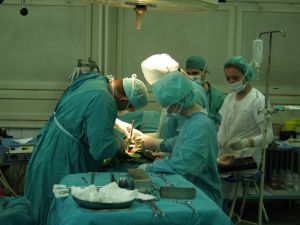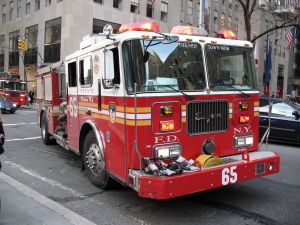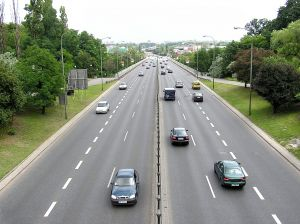Road rage, also called aggressive driving, is particularly dangerous because it combines feverish emotion with bad decision-making. While most of us know what road rage looks like, it is more difficult to construct a concise definition for it, as aggressive driving usually involves multiple or sequential actions. Some states have attempted to create a statutory definition of aggressive driving to allow law enforcement to pull over drivers engaging in such bad behavior. As of November 2010, Arizona, Delaware, Florida, Georgia, Indiana, Maryland, Nevada, North Carolina, Rhode Island and Virginia had enacted aggressive driving laws. The Rhode Island definition of aggressive driving is representative of most states who have created road rage legislation. It states:
“Aggressive Driving” is defined as operating a motor vehicle in violation of any speed law and a violation of two or more of the following traffic law provisions: (1) obedience to traffic control devices; (2) overtaking on the right; (3) driving within a traffic lane; (4) following too closely-interval between vehicles; (5) yielding right of way; (6) entering the roadway; (7) use of turn signals; (8) relating to school buses, special stops, stop signs and yield signs; and, (9) use of emergency break-down lane for travel.
The problem with the definition is it simply lists behavior that is already in violation of the vehicle code and lumps it under one phrase, although it does allow for one citation instead of burdening officers with issuing two or three at one time. The fines imposed for aggressive driving by different states varies widely- from $100 to $5000 (Such high fines are only imposed if the driver caused bodily injury through disregard for others’ safety).
Indiana has one of the strictest aggressive driving policies, making it a Class A misdemeanor to intentionally harass or intimidate a person in another vehicle and engages in aggressive driving as defined by the statute.
By comparison, California has not pursued specific road rage legislation. However, Vehicle Code Section 23103 does prohibit “reckless driving”, defined as “A person who drives a vehicle upon a highway [or off-street parking facility] in willful or wanton disregard for the safety of persons or property is guilty of reckless driving.” Instead of requiring the driver to violate two or more Vehicle Code sections, the California definition of reckless driving allows law enforcement to look at the totality of the circumstances, including intention, when taking action against an aggressive driver.
In 1999, the Department of Transportation held an event called Aggressive Driving and the Law: A Symposium. Its goal was to promote enforcement against aggressive driving at the state level. In addition, the Department of Transportation conduction two studies- The Aggression Suppression Program in Milwaukee, Wisconsin completed in May 2001 and Ticketing Aggressive Cars and Trucks in Washington State: High Visibility Enforcement Applied to Share the Road Safely from May 2006. The symposium and the studies came to the same conclusion that enforcement is key to reducing aggressive driving and resulting accidents.
More than ten years after the Department of Transportation’s symposium, California and the country as a whole is still struggling with road rage. The AAA: Foundation for Traffic Safety’s 2010 Traffic Safety Culture Index states that 52% of drivers said driving feels less safe today than it did 5 years ago, a 17-percentage-point increase over 2009. The Aggression Suppression Program study encouraged law enforcement to look beyond speeding citations and widen their enforcement of bad driver behavior. It found that areas with increased enforcement saw a significant decline in aggressive driving in the future. Further, it encouraged states to advertise widened efforts to crack down on aggressive driving and to increase driver education about the dangers of road rage. Legislation that prohibits aggressive driving is a good step, but publicizing these laws and increased enforcement is essential to have a real impact on the safety of our streets.
Continue Reading ›
 Road construction and maintenance is a necessary part of life in our times, especially here in California where driving is such a necessary part of our daily lives. At the Brod Law Firm, we represent Northern California automobile accident victims. As Sacramento car accident lawyers, we know that construction zones can be particularly dangerous and that it is especially important to exercise care when driving through work zones or when traffic is detoured to a less travelled route to accommodate road work.
Road construction and maintenance is a necessary part of life in our times, especially here in California where driving is such a necessary part of our daily lives. At the Brod Law Firm, we represent Northern California automobile accident victims. As Sacramento car accident lawyers, we know that construction zones can be particularly dangerous and that it is especially important to exercise care when driving through work zones or when traffic is detoured to a less travelled route to accommodate road work. San Francisco Injury Lawyer Blog
San Francisco Injury Lawyer Blog













 As your
As your  In total $850,000 in fines were issued for five different types of medical errors. Agents of the California Department of Public Health are trained to look for
In total $850,000 in fines were issued for five different types of medical errors. Agents of the California Department of Public Health are trained to look for  The fire sparked in the early morning hours of Tuesday December 6 in a West Oakland duplex. The home, a Victorian-style two-story located at 30th and Chestnut, had recently been remodeled with an apartment on each floor. In addition to displacing three residents, the fire caused at least $30,000 in damages. According to the reports, the fire was caused by faulty chimney construction. The chimney had been built without a flue and the fire started after the upper-level residents used the fireplace in their unit. The embers from the fireplace were unable to exit and sparked a fire in the attic that then spread to the roof. Luckily, no one was injured and a team of twenty firefighters were able to control and extinguish the flames.
The fire sparked in the early morning hours of Tuesday December 6 in a West Oakland duplex. The home, a Victorian-style two-story located at 30th and Chestnut, had recently been remodeled with an apartment on each floor. In addition to displacing three residents, the fire caused at least $30,000 in damages. According to the reports, the fire was caused by faulty chimney construction. The chimney had been built without a flue and the fire started after the upper-level residents used the fireplace in their unit. The embers from the fireplace were unable to exit and sparked a fire in the attic that then spread to the roof. Luckily, no one was injured and a team of twenty firefighters were able to control and extinguish the flames.

